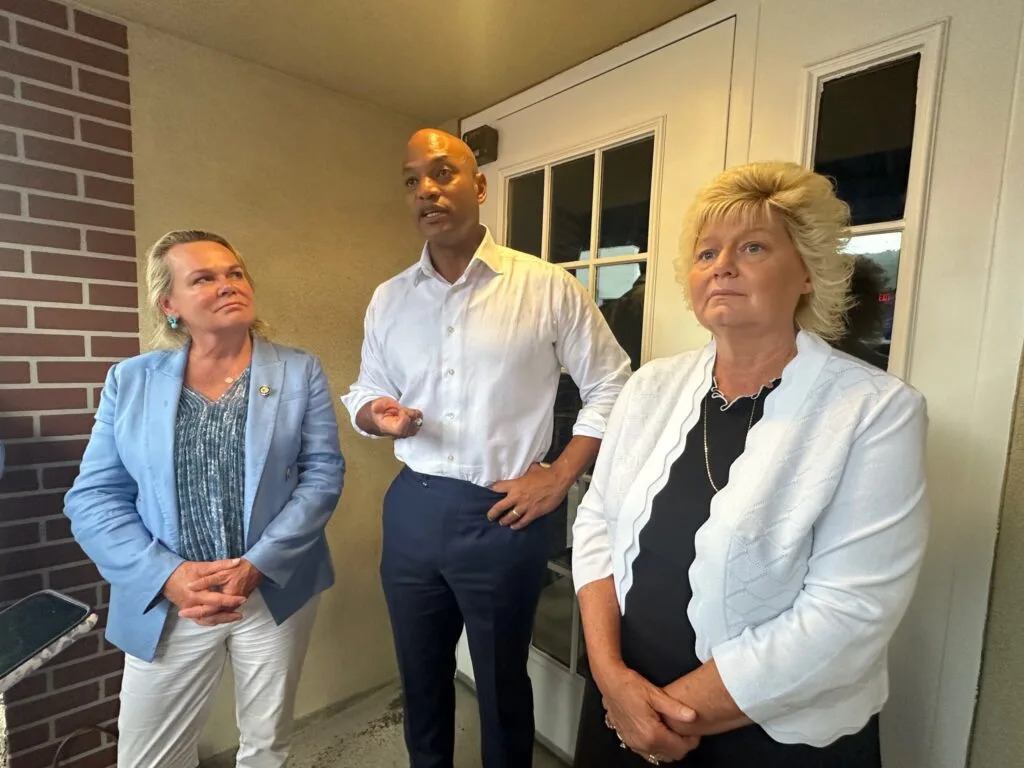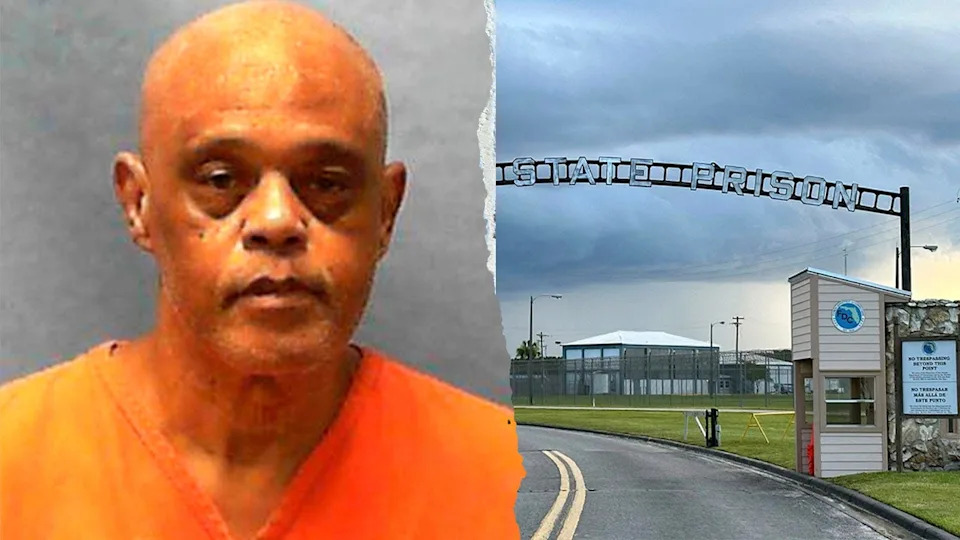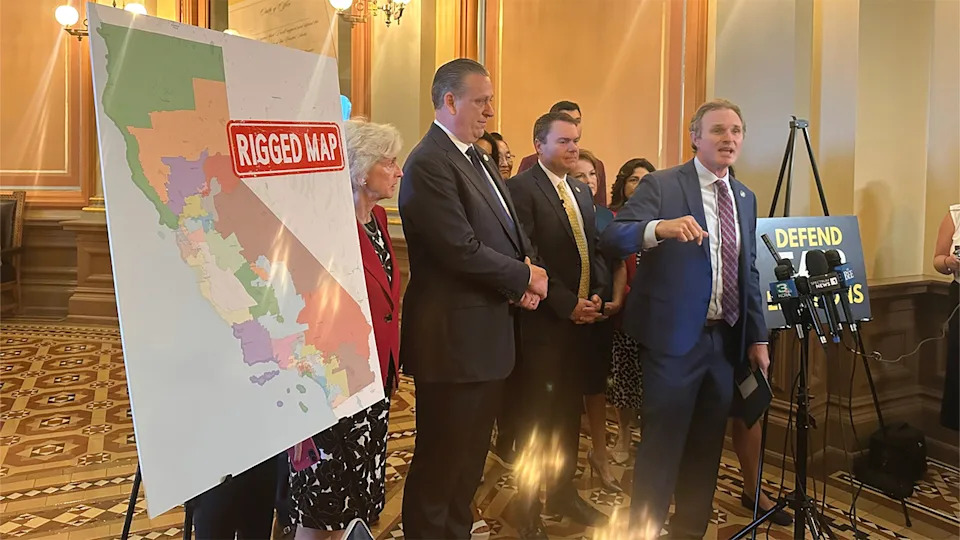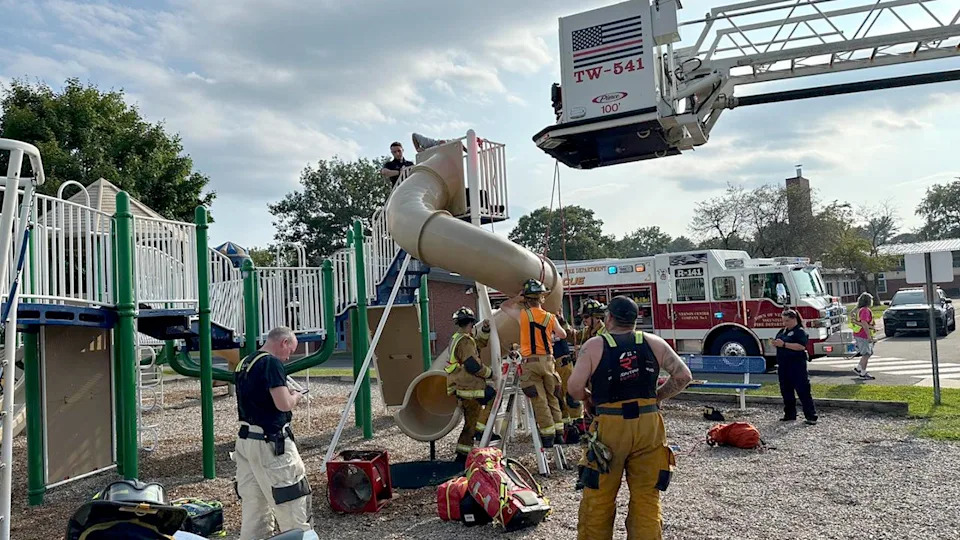
From left, Rep. April McClain Delaney (D-6th), Gov. Wes Moore and Westernport Mayor Judy Hamilton speak to reporters In July. The three were part of a meeting to discuss a decision by FEMA to deny federal aid to help areas of the state recover from devastating floods in May. Moore appealed that denial Tuesday in a letter to President Donald Trump. (File photo by Bryan P. Sears/Maryland Matters.)
The cost of damage to two Western Maryland counties from a flash flood in May has more than doubled, easily justifying the need for federal emergency aid, state officials said Tuesday.
The new estimates were detailed in a letter from Gov. Wes Moore (D) to President Donald Trump (R). The letter sent Tuesday makes good on Moore’s announcement last month to appeal a denial of federal aid by the Federal Emergency Management Agency.
“At the time of our original request, local jurisdictions and Maryland state agencies reported an estimated $15.8 million in damages,” Moore wrote in his seven-page letter to Trump.
The governor said in the letter, which was released to media, that state emergency management officials found $17.9 million in additional costs related to the flooding in Allegany and Garrett Counties that are eligible for federal aid, bringing the overall estimate of eligible damages from the May flood to $33.7 million.
“This amount is nearly triple Maryland’s statewide threshold, indicating the need for FEMA Public Assistance,” Moore wrote.
The damage came from “extreme storms” that inundated parts of Allegany and Garrett counties in May.
George’s Creek surged to more than 12 feet above major flood stage. Wills Creek in Cumberland rose 8 feet. The Potomac River also flooded. Areas of both counties were evacuated. Midland, Lonaconing, and Westernport were among the hardest-hit areas.
Moore declared a state of emergency in the area. In addition to providing some state aid, an application for federal recovery funds was also submitted.
FEMA denied that request in a brief letter that offered no detailed justification.
Moore’s letter Tuesday makes good on a vow to appeal that denial.
Last month, the governor traveled to Westernport to meet with local officials in a closed-door meeting. Afterward, he noted that an aid request from West Virginia had been approved for a lower amount of damages, and that the denial of federal aid for Maryland “is petty, it is partisan, and it is punishing and is deeply unfair to the people of Allegany and Garrett County.”
“I’ve stopped trying to do the mental gymnastics of trying to understand how this administration is making its decisions, or what to expect when it comes to partnership with them,” Moore told reporters last month.
In his appeal letter Tuesday, Moore made no mention of West Virginia but instead spent seven pages elaborating on damage to public infrastructure, homes and schools left in the wake of the flooding.
While Westernport Elementary School suffered severe first-floor flood damage, Moore said the school will re-open this fall with students attending classes on upper floors as repairs continue.
But the school has no functioning boiler. Moore noted that the mean temperature in the area in September is 66 degrees. Schools typically turn on the heating systems once temperatures fall below 68 degrees. Moore called the lack of a working heating system “a critical issue.”
The flood also damaged the school cafeteria and kitchen. Breakfast and lunch for students will have to be brought in daily from another school.
Moore added that the state and counties are working together to improve data collection using existing weather stations in the area.
“The terrain in the mountains has made forecasting and monitoring in the area difficult, and incorporation of these tools will improve these areas as well as tracking severe weather trends,” Moore wrote. “By identifying and taking corrective actions, post-disaster mitigation can help Allegany and Garrett Counties reduce future financial burden of property and infrastructure damage, recover faster, and take a more proactive stance towards disaster preparedness.”








Comments